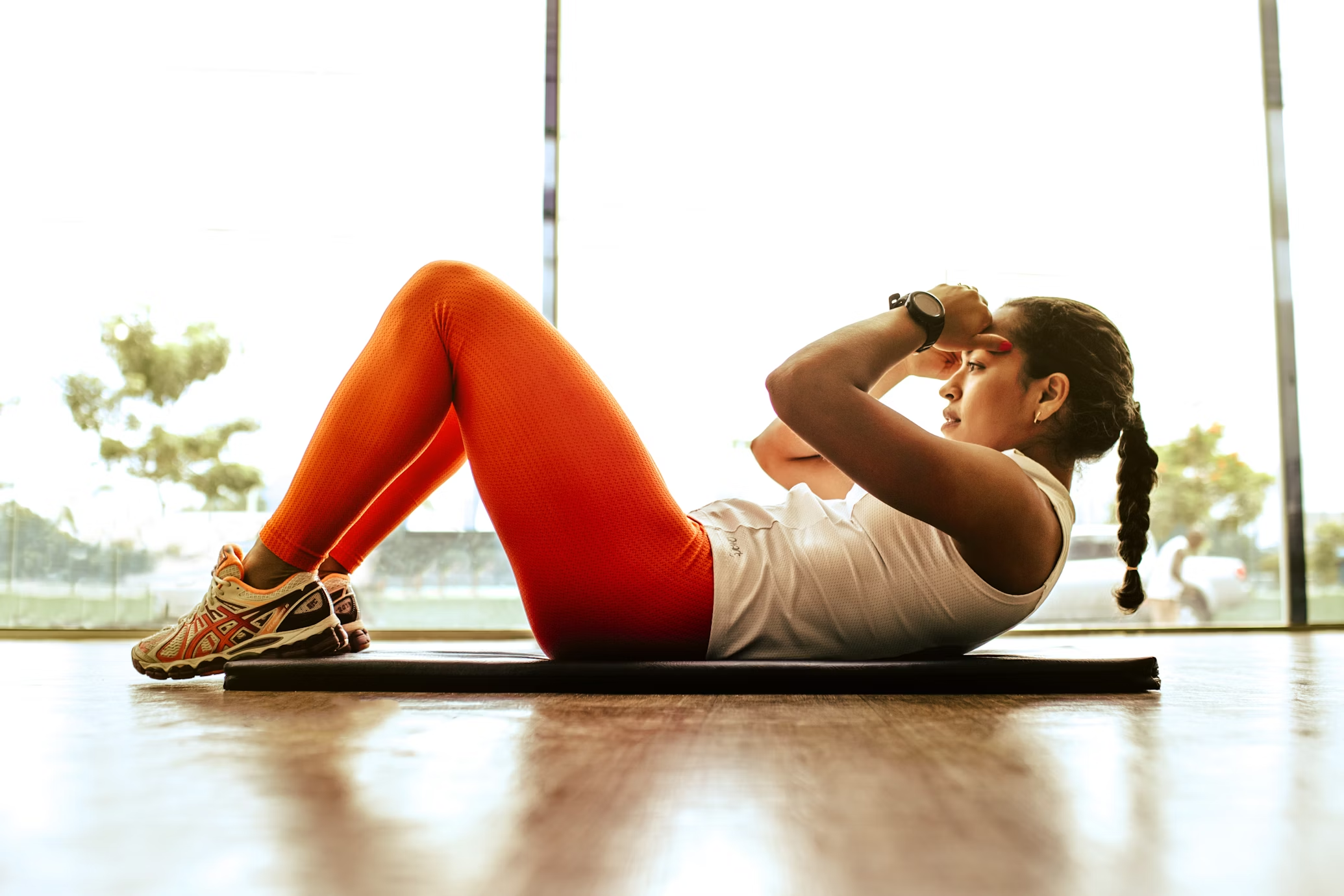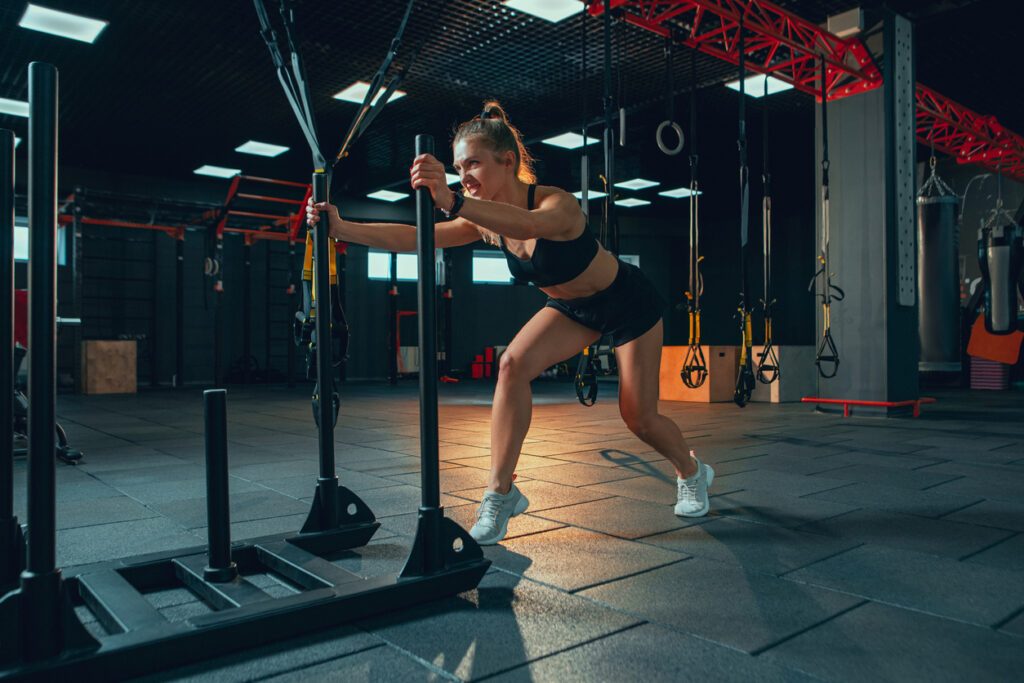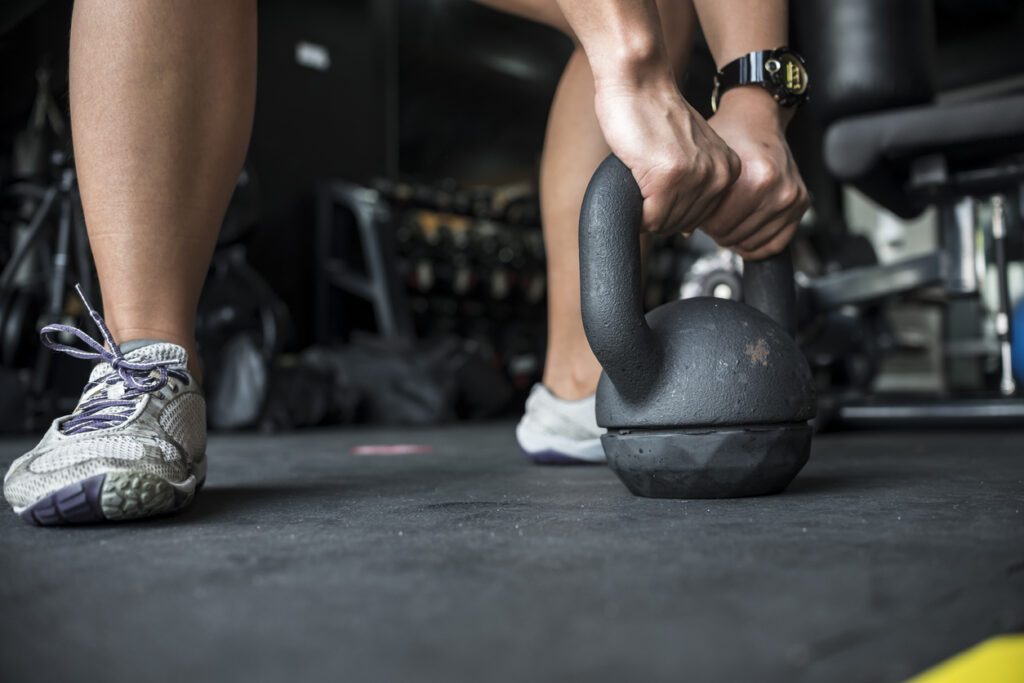
Summary
Welcome / Welcome / Tips for getting started / Programme cardio maison : guide complet pour s’entraîner chez soi
Programme cardio maison : guide complet pour s’entraîner chez soi
Vous cherchez un moyen efficace de vous entraîner chez vous ? Ce guide complet sur le programme cardio maison est fait pour vous. Il vous offre des conseils pratiques et des routines adaptées à tous les niveaux.
Find out how home cardio can improve your cardiovascular health, aid weight loss and boost your mental well-being. You will also learn how to assess your physical fitness and choose the right equipment.
Ready to transform your workout? Dive into this article and find the home cardio program that's right for you. Don't waste any more time, your new routine starts here!
Introduction to cardio
The importance of cardio for health
Le cardio, ou entraînement cardiovasculaire, est essentiel pour maintenir une bonne santé globale. Il aide à renforcer le cœur, améliore la circulation sanguine et augmente la capacité pulmonaire. En pratiquant régulièrement des exercices cardio, vous pouvez réduire le risque de maladies cardiovasculaires, de diabète et d’hypertension. En plus de ces avantages physiques, le cardio stimule également la libération d’endorphines, les hormones du bonheur, qui contribuent à une meilleure santé mentale et à une sensation de bien-être général.
Benefits of doing cardio at home
Faire du cardio à la maison présente de nombreux avantages. Tout d’abord, cela permet de gagner du temps en évitant les déplacements vers une salle de sport. Vous pouvez vous entraîner à tout moment, selon votre emploi du temps, sans avoir à vous soucier des horaires d’ouverture. De plus, s’entraîner chez soi offre un cadre confortable et privé, idéal pour ceux qui préfèrent éviter les foules. Avec un peu de créativité, vous pouvez utiliser des objets du quotidien comme des chaises ou des bouteilles d’eau pour varier vos exercices et rendre vos séances plus intéressantes. Enfin, faire du cardio à la maison est souvent plus économique, car vous n’avez pas besoin d’investir dans des abonnements coûteux ou du matériel sophistiqué.
The benefits of cardio at home
Improved cardiovascular health
Pratiquer le cardio à la maison renforce le cœur et améliore la circulation sanguine, ce qui réduit le risque de maladies cardiovasculaires. En augmentant la fréquence cardiaque, ces exercices entraînent le cœur à pomper plus efficacement, ce qui aide à prévenir l’accumulation de plaques dans les artères et à maintenir une tension artérielle saine.
Reduction of blood pressure
Regular cardio can help lower and stabilize blood pressure. Exercises such as brisk walking, jogging in place, or jumping jacks increase blood flow and flexibility of blood vessels, thereby reducing resistance and pressure on artery walls.
Amélioration de l’endurance
L’endurance physique s’améliore grâce à des séances de cardio régulières. En sollicitant votre cœur et vos poumons, vous augmentez leur capacité à fournir de l’oxygène aux muscles pendant l’effort, ce qui permet de prolonger et d’intensifier vos séances d’exercice sans vous sentir épuisé.
Weight loss and toning
Le cardio est un allié de taille pour la perte de poids et la tonification musculaire. Il permet de brûler des calories et d’éliminer les graisses superflues tout en renforçant les muscles.
Calorie burning
Les exercices cardio sont parmi les plus efficaces pour brûler des calories. Une séance de 30 minutes peut brûler entre 200 et 400 calories, selon l’intensité de l’exercice et votre poids. En intégrant ces séances à votre routine hebdomadaire, vous pouvez créer un déficit calorique qui favorise la perte de poids.
Muscle strengthening
In addition to burning fat, cardio also helps build muscle. Exercises like squats, slots and burpees engage major muscle groups, helping to tone and sculpt your body. Stronger muscles increase your basal metabolism, which helps you burn calories even at rest.
Mental well-being
Le cardio à la maison ne profite pas seulement à votre corps, mais aussi à votre esprit. Il joue un rôle crucial dans la gestion du stress et l’amélioration de l’humeur.
Stress reduction
L’exercice cardio stimule la production d’endorphines, les hormones du bonheur, qui agissent comme des antidépresseurs naturels. Une séance de cardio peut ainsi vous aider à évacuer le stress accumulé et à vous sentir plus détendu.
Amélioration de l’humeur
En plus de réduire le stress, le cardio améliore votre humeur et votre bien-être général. Les endorphines libérées pendant l’exercice procurent une sensation de bonheur et d’euphorie, contribuant à lutter contre l’anxiété et la dépression. De plus, atteindre vos objectifs d’entraînement et constater des améliorations physiques peuvent renforcer votre confiance en vous et votre estime de soi.
How to start a cardio program at home
Assessing your fitness level
Before starting a cardio program, it is crucial to know your fitness level. This step allows you to define realistic goals and choose the exercises adapted to your condition.
Simple tests to perform
To assess your fitness, you can perform simple tests like the six-minute walk test. Walk at a moderate speed for six minutes and record the distance covered. You can also do a squat test by counting how many squats you can do in a minute. These tests give you a baseline to measure your progress.
Tips for Beginners
Si vous débutez, commencez lentement et augmentez progressivement l’intensité de vos exercices. Optez pour des séances courtes de 10 à 15 minutes et ajoutez 5 minutes chaque semaine. Écoutez votre corps et évitez de vous pousser à l’extrême dès le début. La constance est la clé pour éviter les blessures et les découragements.
Necessary equipment
Pour un programme cardio à la maison, vous n’avez pas besoin de beaucoup d’équipement. Voici ce qui peut être utile.
Basic equipment (mat, light dumbbells)
A floor mat is essential for floor exercises like sit-ups or stretching. Light dumbbells (1 to 5 kg) can add resistance to your exercises and help strengthen your muscles. If possible, invest in a skipping rope, an excellent accessory for cardio.
Equipment-free alternatives
Si vous ne souhaitez pas investir dans du matériel, pas de problème ! Utilisez des objets du quotidien comme des bouteilles d’eau en guise d’haltères. Les escaliers de votre maison peuvent servir pour des exercices de montée et de descente. De nombreux exercices cardio, comme les jumping jacks, les fentes et les burpees, ne nécessitent aucun équipement.
Preparation and safety
Before starting each session, it is important to prepare well to avoid injuries and maximize the benefits of your training.
Warm-up and stretching
Un bon échauffement prépare vos muscles et vos articulations à l’effort. Faites 5 à 10 minutes de marche sur place, de mouvements de bras et de rotations de hanches. Après votre séance, prenez le temps de vous étirer pour améliorer votre flexibilité et réduire les courbatures. Concentrez-vous sur les muscles principaux que vous avez sollicités.
Tips to Avoid Injuries
Pour éviter les blessures, veillez à maintenir une bonne posture pendant les exercices. Gardez le dos droit, engagez vos abdominaux et évitez de trop solliciter vos articulations. Buvez suffisamment d’eau avant, pendant et après votre entraînement pour rester hydraté. Enfin, portez des chaussures de sport appropriées pour soutenir vos pieds et vos chevilles.
Cardio programs for beginners
30 minute program
For beginners, a 30-minute program is ideal to start with. It is simple, effective and does not require a lot of equipment.
Example routine
- 5 minutes of walking in place: Start by walking in place to warm up your body. Keep a moderate pace and swing your arms to engage the whole body.
- 5 minutes de jumping jacks : Passez aux jumping jacks pour augmenter votre rythme cardiaque. Assurez-vous de bien sauter et d’écarter les jambes tout en levant les bras au-dessus de la tête.
- 5 minutes of squats: Do squats to work your legs and glutes. Keep your back straight, feet shoulder-width apart, and lower yourself as if you were going to sit in a chair.
- 5 minutes of lunges: Alternate lunges with each leg. Step one foot forward and step down, bending both knees. Return to the starting position and switch legs.
- 5 minutes de montées de genoux : Levez les genoux alternativement jusqu’à la hauteur des hanches. Ce mouvement dynamique booste votre cardio tout en renforçant les jambes.
- 5 minutes of walking in place to recover: Finish with a slow walk in place to gradually bring your heart rate down.
Simple and effective exercises
Here are some basic exercises for beginners, easy to do at home without equipment.
Walk in place
La marche sur place est un excellent exercice pour débuter. Elle réchauffe les muscles et prépare le corps à des activités plus intenses. Marchez à un rythme modéré en levant bien les genoux et en balançant les bras pour maximiser l’effort.
Jumping jacks
Les jumping jacks sont parfaits pour augmenter le rythme cardiaque rapidement. Ils sollicitent de nombreux muscles, notamment les jambes, les bras et le cœur. Faites-les à un rythme qui vous convient, en augmentant progressivement l’intensité.
Squats
Les squats sont essentiels pour renforcer les jambes et les fessiers. Ils améliorent aussi l’équilibre et la flexibilité. Pour réaliser un squat correct, tenez-vous debout, les pieds écartés à la largeur des épaules, et descendez en fléchissant les genoux comme si vous alliez vous asseoir, puis remontez.
Intermediate cardio programs
45 minute program
Pour ceux qui ont déjà une certaine expérience en cardio, un programme de 45 minutes permet de pousser l’entraînement un peu plus loin, en augmentant l’intensité et la durée des exercices.
Example routine
- 10 minutes of jogging in place: Start with jogging in place to warm up your body and gradually increase your heart rate.
- 10 minutes de burpees : Passez aux burpees pour un exercice intense qui sollicite tout le corps. Faites une pompe, ramenez les pieds sous vous, puis sautez en l’air avec les bras levés.
- 10 minutes of mountain climbers: Get into a plank position and alternate bringing your knees toward your chest as quickly as possible. This exercise is excellent for cardio and strengthening the abs.
- 10 minutes de sauts en squat : Faites des squats suivis d’un saut en l’air. Cet exercice renforce les jambes et augmente considérablement la fréquence cardiaque.
- 5 minutes of walking in place to recover: Finish with a slow walk in place to gradually bring your heart rate down.
Exercices pour augmenter l’intensité
Here are some specific exercises to intensify your intermediate cardio sessions.
Burpees
Burpees are a full-body exercise that combines a push-up and an explosive jump. They quickly increase the heart rate and work multiple muscle groups, including the legs, arms and core.
Mountain climbers
Les mountain climbers sont parfaits pour renforcer le cœur et les abdominaux. En position de planche, amenez alternativement vos genoux vers la poitrine à un rythme rapide. Cet exercice améliore l’endurance et la coordination.
Squat jumps
Les sauts en squat sont excellents pour travailler les jambes et les fessiers tout en augmentant le rythme cardiaque. Descendez en position de squat et poussez avec vos jambes pour sauter le plus haut possible. Répétez rapidement pour maximiser l’effort cardio.
Advanced cardio programs
60 minute program
Pour les adeptes de cardio ayant un bon niveau de forme physique, un programme de 60 minutes offre un défi intense qui améliore significativement l’endurance et la force.
Example routine
- 15 minutes de HIIT (High-Intensity Interval Training) : Alternez 1 minute d’exercice intense (comme des sprints sur place ou des burpees) avec 1 minute de repos actif (comme de la marche sur place). Répétez ces cycles pour un total de 15 minutes.
- 15 minutes of circuit training: Do a series of varied exercises such as squats, pumps, pull-ups, and lunges, with little or no rest between each exercise. Do several laps of the circuit for a complete session.
- 15 minutes of running on the spot with variations: Vary between slow running, sprints and knee raises to keep your heart rate up while working different parts of the legs.
- 15 minutes de stretching et récupération : Terminez par des étirements complets pour favoriser la récupération musculaire et améliorer la flexibilité. Concentrez-vous sur les muscles sollicités durant l’entraînement.
Exercises for intensive training
Pour un programme avancé, voici des exercices spécifiques qui poussent vos limites et maximisent les bénéfices du cardio et les bienfaits du cross training.
HIIT
Le HIIT est une méthode d’entraînement qui combine des périodes d’exercices intenses avec des périodes de récupération. Ce type d’entraînement augmente la capacité cardiovasculaire, brûle beaucoup de calories et améliore la condition physique générale. Par exemple, faites des sprints de 30 secondes suivis de 30 secondes de marche, répétez plusieurs fois.
Circuit training
Le circuit training est une série d’exercices effectués l’un après l’autre avec peu de repos. Il permet de travailler tous les groupes musculaires et de maintenir un rythme cardiaque élevé. Un exemple de circuit pourrait inclure des pompes, des squats, des tractions, des sauts en l’air, et des abdos, répétés en boucle.
Running on the spot with variations
Varier votre course sur place aide à cibler différents muscles et à éviter la monotonie. Intégrez des sprints, des montées de genoux, des talons-fesses, et des pas chassés. Ces variations augmentent l’intensité et sollicitent les muscles de manière différente, rendant l’entraînement plus complet et efficace.
Tips for optimizing your cardio workout
Monitoring and progress
Pour maximiser les bénéfices de votre entraînement cardio, il est essentiel de suivre vos progrès et d’ajuster vos séances en conséquence.
Utilisation d’applications de fitness
Les applications de fitness sont des outils fantastiques pour suivre vos séances, mesurer vos performances et rester motivé. Des applications comme MyFitnessPal, Strava, ou Nike Training Club permettent de consigner vos entraînements, de surveiller votre rythme cardiaque et de définir des objectifs personnalisés. Elles offrent également des plans d’entraînement adaptés à votre niveau et des défis pour vous aider à progresser.
Tenir un journal d’entraînement
Un journal d’entraînement est une autre méthode efficace pour suivre vos progrès. Notez chaque séance, la durée, les exercices réalisés, et vos sensations. Ce suivi vous permet de voir vos améliorations au fil du temps et d’ajuster votre programme en fonction de vos objectifs et de vos performances.
Motivation and regularity
La clé pour réussir un programme cardio est de rester motivé et de s’entraîner régulièrement.
Set realistic goals
Define clear and achievable goals. Whether it's losing weight, improving your endurance, or simply feeling better, specific goals will give you additional direction and motivation. Break your goals down into smaller steps to maintain your long-term motivation.
Trouver un partenaire d’entraînement
S’entraîner avec un partenaire peut transformer votre routine cardio en une activité sociale et agréable. Un partenaire d’entraînement vous encourage, vous motive et rend les séances plus amusantes. Vous pouvez également partager des conseils, des astuces et des encouragements mutuels, ce qui aide à rester engagé dans le temps.
Nutrition and hydration
A good diet and adequate hydration are essential to optimize your cardio workout.
Balanced diet
Pour soutenir vos efforts physiques, adoptez une alimentation équilibrée riche en nutriments. Consommez des protéines pour réparer et construire les muscles, des glucides pour l’énergie, et des graisses saines pour le fonctionnement général du corps. Privilégiez les aliments complets comme les fruits, les légumes, les céréales complètes, et les sources de protéines maigres.
Importance de l’hydratation
Rester hydraté est crucial, surtout lors des séances de cardio intense. L’eau aide à réguler la température corporelle, à lubrifier les articulations, et à transporter les nutriments nécessaires aux muscles. Buvez de l’eau avant, pendant et après votre entraînement pour maintenir une bonne hydratation. Si vous vous entraînez longtemps ou par temps chaud, envisagez de consommer des boissons électrolytiques pour remplacer les minéraux perdus par la sueur.
Conclusion
Cardio at home is a practical and effective solution to improve your health. With programs suitable for all levels, you can strengthen your core, lose weight and improve your mental well-being. Train at your own pace and enjoy the many benefits of cardio at home.
Assessing your fitness level, choosing the right equipment and following a structured program are essential to progress. Take on simple beginner exercises or take on more intense challenges with intermediate and advanced programs. Stay motivated by tracking your progress and eating well.
Pour aller plus loin, explorez nos articles sur les bienfaits de l’entraînement en HIIT, la nutrition pour sportifs ou des astuces pour rester motivé. Découvrez comment optimiser chaque aspect de votre santé et bien-être grâce à des conseils pratiques et accessibles. Continuez à vous informer et à progresser avec nos ressources dédiées.
Come try HIIT at DRIP
If you want to vary your training, we welcome you to our DRIP studios! Here, you will be right at home, with more equipment available to surpass yourself!
The concept of DRIP is as follows: 7 different exercises, 3 rounds, 1 minute per exercise. The exercises follow one another without rest to ensure maximum calorie burning! Our coaches, our playlists and our lights will immerse you in a unique atmosphere that will motivate you.
No matter your sporting level, you are welcome at DRIP!
Ready to sweat? We will meet you in our Parisian studios, in Monceau or Grands Boulevards. You'll love to hate us!❤️🔥
Share
Tagged
Read also
follow us
on instagram
To follow all our news,
take advantage of our tutorials and participate
in our many competitions.
BREAKING NEWS!
Receive our newsletter.






